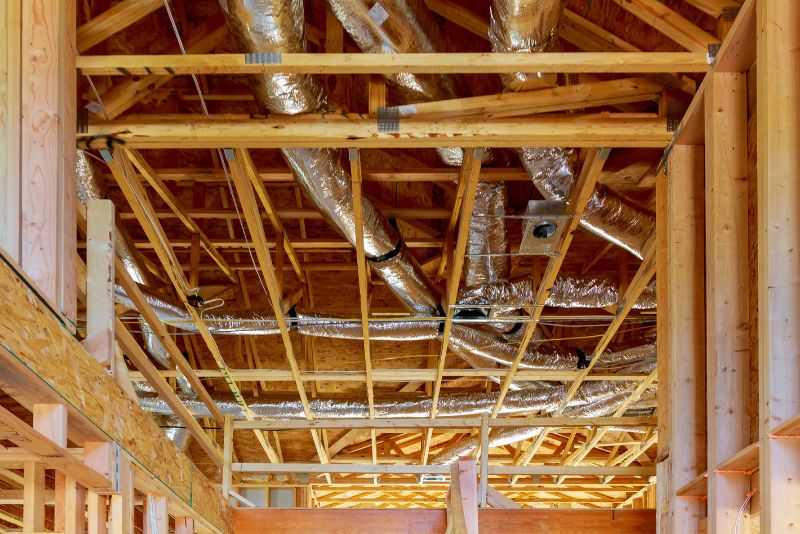Ducted air conditioning systems, a staple in modern residential and commercial buildings, offer an efficient and versatile way to control the climate within our living and working spaces. But how exactly do these systems work to keep us comfortable throughout the year? This blog delves into the mechanics behind ducted air conditioning, breaking down its components, the cooling process, and the advantages it offers.
What is Ducted Air Conditioning?
Ducted air conditioning systems consist of a central unit connected by a series of ducts to various rooms or zones in a building. These systems are designed to provide uniform cooling or heating to the entire space, offering a seamless climate control solution.

Key Components of a Ducted Air Conditioning System
To understand how ducted air conditioners work, it’s crucial to familiarize ourselves with their main components:
- Outdoor Unit: Houses the compressor and condenser, responsible for expelling heat from the building.
- Indoor Unit: Contains the evaporator coil and fan. The indoor unit is typically installed in the ceiling or under the floor and is where the air is cooled before being distributed.
- Ductwork: A network of insulated tubes that transports air from the indoor unit to various rooms.
- Thermostat: Allows users to set and regulate the desired temperature throughout the building.
The Cooling Process Explained
The process of cooling a space with a ducted air conditioning system involves several steps:
- Air Intake: The system draws in warm air from the rooms through return air ducts.
- Cooling the Air: The warm air is passed over the evaporator coil in the indoor unit, where refrigerant absorbs heat, cooling the air.
- Circulation: The cooled air is then pushed through the ductwork by the fan and distributed back into the rooms through vents.
- Heat Expulsion: The refrigerant, now warmed from absorbing indoor heat, is pumped to the outdoor unit where it releases the heat and is cooled down again.
This cycle repeats to maintain the set temperature, providing continuous comfort.
Zoning: Customized Comfort
One of the standout features of ducted systems is zoning. Zoning allows you to divide your home or office into different areas or zones, each with individual temperature control. This means you can cool or heat specific zones as needed, enhancing comfort and efficiency.
Benefits of Ducted Air Conditioning
Ducted air conditioning systems offer several advantages over other types of cooling solutions:
- Uniform Temperature Distribution: Ducted systems can evenly cool or heat all parts of a building, eliminating hot or cold spots.
- Aesthetic Appeal: With only the vents visible in each room, ducted systems are less obtrusive than wall-mounted units.
- Energy Efficiency: Advanced models come with features like inverter technology and zoning capabilities, which can significantly reduce energy consumption.
- Improved Air Quality: Many ducted systems include filters that purify the air, reducing dust, allergens, and other pollutants.
Installation and Maintenance
The installation of a ducted air conditioning system is more complex than other types and typically requires professional installation. The ductwork needs to be carefully planned and installed to ensure efficient airflow and system performance.
Regular maintenance is crucial to keep the air conditioning system running efficiently. This includes cleaning or replacing filters, checking the refrigerant levels, and ensuring the ductwork is sealed and insulated correctly.
Ducted air conditioning systems offer an effective and efficient way to maintain a comfortable climate in larger spaces. Understanding how these systems work helps homeowners and businesses make informed decisions about their heating and cooling needs. With the right setup and regular maintenance, a ducted air conditioner can provide years of comfort and convenience.




